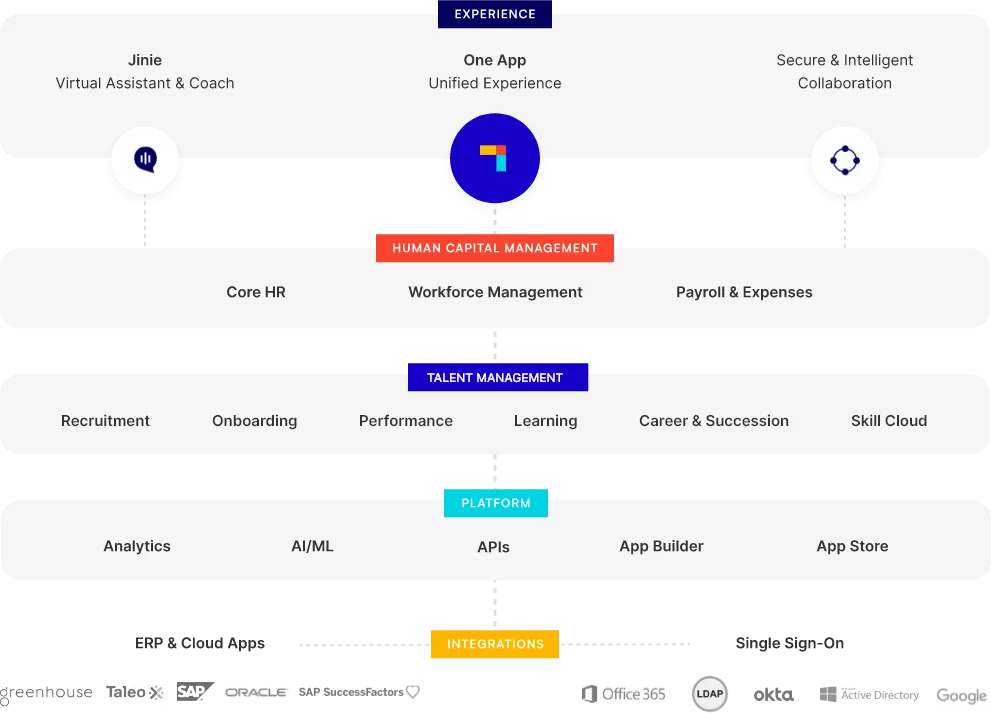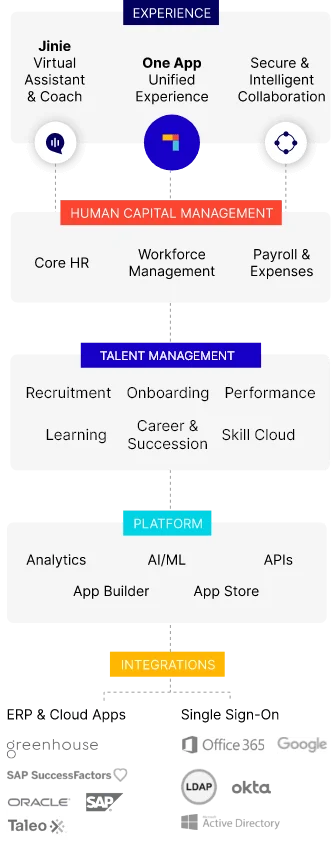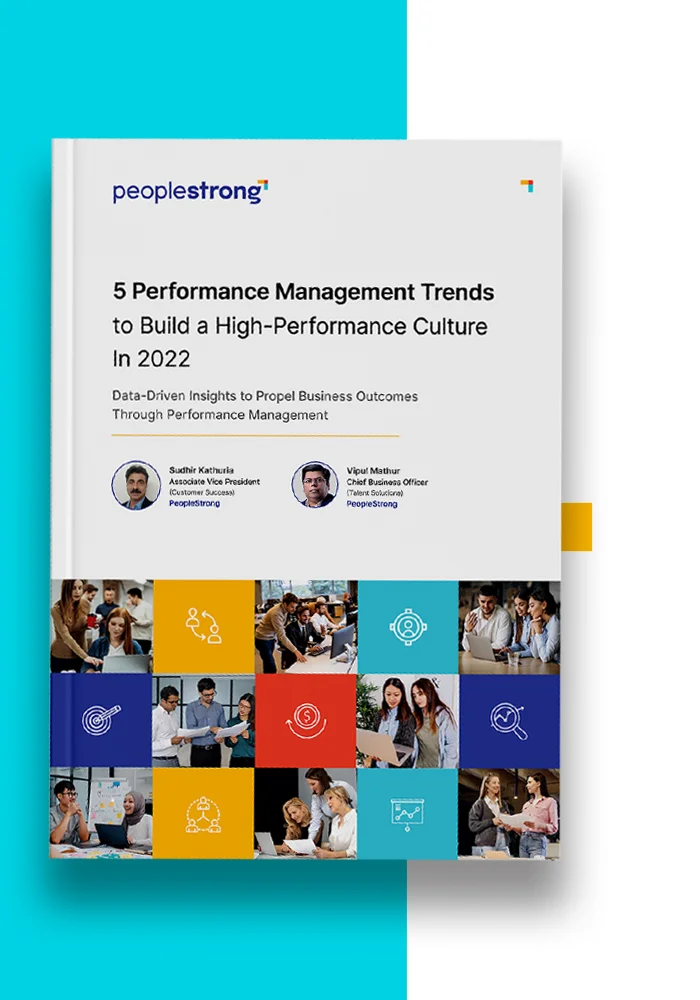In 2024, HR teams are busier than ever. They juggle multiple projects to support their organization’s most valuable asset—its people. This is why setting clear priorities becomes more crucial.
That’s where OKRs (objectives and key results) come in.
Preferred by new-age organizations over traditional performance management methods, OKRs offer a streamlined, data-driven way to align and achieve HR goals effectively.
OKRs provide a structured framework to address organizational challenges head-on, especially within the GCC. If you’re in HR, adopting OKRs can help you focus and drive results where they matter most.
In fact, according to the OKR Impact Report 2022, 83% of companies confirm that OKRs significantly boost organizational performance, with nearly a third fully endorsing their positive impact.
In this blog, we’ll talk about what OKRs are and how they can help you transform your entire performance management process.
What Are OKRs?

OKRs (Objectives and Key Results) are a goal-setting framework used by teams and organizations to define measurable goals and track their outcomes.
In the context of HR, OKRs focus on establishing clear, strategic objectives for the human resources department that align with broader organizational goals.
Key Components of OKRs
The OKR framework is a powerful tool for setting and achieving goals at all levels of an organization. It’s built on three main components: Objectives, Key Results, and Initiatives. Here’s a closer look at each component:
1. Objectives
Objectives are high-level, qualitative goals set by an organization, team, or individual. They are designed to be clear, inspirational, and aligned with the organization’s mission and values.
Objectives set the direction and define the “what” that needs to be achieved. For example, a tech company’s objective might be to “Launch the most user-friendly mobile banking app.”
2. Key Results
Key Results quantitatively measure the success of an objective. They should be specific, time-bound, and measurable—akin to SMART goals.
Key Results make tracking progress and evaluating whether the objectives are being met straightforward. Using the previous example, a key result could be “Achieve a customer satisfaction score of 90% within six months.”
3. Initiatives
Though not always formally recognized in every OKR framework, initiatives are crucial as they link high-level goals with daily activities. These are the projects, tasks, or actions that must be executed to drive progress towards achieving key results.
For instance, initiatives for launching the mobile banking app might include “Conduct user experience research” and “Develop a beta version for initial user feedback.”
How Are OKRs Different From Traditional Goal-Setting

The OKR platform ensures that every goal has concrete, quantifiable outcomes that can be tracked and assessed. Traditional methods like KPIs or MBOs generally set annual goals that might be disconnected from daily activities.
At the same time, OKRs encourage frequent updates—usually quarterly—and aim for alignment across the entire organization. This frequent recalibration allows teams to stay agile and adapt quickly to changes in the business environment or strategic direction.
Moreover, OKRs are typically transparent across the organization, fostering a culture of openness and accountability. This transparency helps everyone understand how their efforts contribute to the larger company goals, enhancing collaboration and driving collective success.
How Do OKRs Benefit You
OKRs offer significant advantages in the Middle East, where organizational alignment, transparency, and performance are crucial for navigating complex market dynamics.
1. OKRs Help Articulate And Align Goals
As recent findings highlight, the most successful companies using OKRs report a 28% higher communication intensity, underlining the importance of regular check-ins and updates.
By clearly defining objectives and linking them to measurable results, OKRs ensure that everyone in the organization is working towards the same strategic goals, enhancing alignment across different levels and departments.
2. OKRs Drive Action
Their clarity and measurable nature motivate teams to take focused action that directly contributes to achieving defined outcomes, driving operational agility and responsiveness.
3. OKRs Help Track And Measure Progress
With key results as benchmarks, OKRs provide a clear framework for tracking progress, allowing organizations to monitor achievements in real-time and adjust tactics as necessary.
4. OKRs Help You Become Agile While Being Flexible and Innovative
The flexibility and real-time tracking enabled by OKRs have consistently proven essential. Studies show that teams fully adopting agile practices, like OKRs, were 93% more likely to outperform their less agile counterparts during unpredictable times
The OKR framework’s regular review cycles enable organizations to reassess their goals and the effectiveness of their strategies. It pushes teams to stretch their capabilities and innovate continually.
OKRs vs KPIs
OKRs (Objectives and Key Results) and KPIs (Key Performance Indicators) are both tools for performance management, but they serve different purposes.
- OKRs are a goal-setting framework used to set challenging, ambitious goals with measurable results. They help organizations align and engage teams towards strategic goals through specific and time-bound actions.
- KPIs, on the other hand, are performance metrics that help organizations measure the success of their activities in reaching key business objectives. They are often used to monitor ongoing performance and operational success.
Let’s look at the brief description of when to use each framework:
| Aspect | OKRs | KPIs |
| Focus | Aspirational goals and outcomes | Operational efficiency and ongoing processes |
| Frequency | Set and reviewed quarterly or annually | Continuously monitored |
| Nature | Qualitative and quantitative | Primarily quantitative |
| Alignment | Aligns individual goals with strategic business objectives | Tracks performance against existing standards |
| When to Use | When aiming to drive significant strategic changes or innovations | When needing to maintain and optimize existing processes |
Pro Tip: Effectively combining OKRs and KPIs can lead to substantial benefits. Use OKRs to establish and push forward strategic initiatives and complement them with KPIs to maintain operational excellence. This dual approach not only ensures continuous improvement but also builds a strong framework for sustainable growth and adaptability.
Step-by-Step Guide to Implement OKRs in Your Organization
Implementing OKRs can streamline strategic alignment and enhance performance management. Here’s a four-step guide to introduce OKRs effectively:
Step 1: Define and Refine Objectives
The foundation of a successful OKR implementation starts with clearly defined objectives. In this initial phase, HR departments should establish three to four major objectives that resonate with the company’s strategic priorities.
These objectives should be ambitious yet achievable, tailored to drive significant organizational impact. It’s crucial to refine these objectives to ensure they are not only aligned with the company’s vision but also adaptable to the dynamic economic landscape of the Middle East.
Step 2: Define Key Results
Once objectives are set, the next step is to define clear and measurable Key Results. These should be specific outcomes or efforts that, if achieved, will indicate the successful accomplishment of the objectives.
Ensure that you make these key results quantifiable to track progress effectively. For instance, if an objective is to improve employee engagement, a key result could be to increase employee satisfaction scores by 20%, as measured by the annual survey.
Step 3: Align Business Reviews with Key Results
Regular reviews are critical in the OKR framework to ensure that objectives remain relevant and that progress towards key results is on track.
You can conduct business reviews quarterly or half-yearly to assess the alignment and achievement of OKRs. These reviews should involve evaluating data collected through KRs to:
- Make informed decisions about strategy adjustments
- Recognize achievements or areas needing improvement
Step 4: Enhance Managerial Effectiveness
The final step focuses on strengthening managerial effectiveness through clear and actionable OKRs. Managers play a pivotal role in the OKR process, from setting objectives to driving their teams towards achieving them.
Integrating your OKRs into managerial practices would improve clarity in communication and decision-making processes. This integration helps managers not only lead by example but also ensures that team goals are well understood and actively pursued.
How to Write Great OKRs
Writing great OKRs (Objectives and Key Results) isn’t just about setting goals; it’s about making them clear, achievable, and motivational. Here’s how you can write OKRs that really drive performance.
1. Be Specific and Clear
When you set an objective, make sure it’s straightforward. For instance, instead of saying, “Improve customer service,” you could say, “Increase customer satisfaction scores by 10% by the end of Q4.” This gives you a clear target to aim for.
2. Make your Key Results Measurable
Each objective should have 2-5 quantifiable key results. For example, if your objective is to “Increase customer satisfaction scores by 10% by the end of Q4,” your key results could include “Reduce average customer response time to under 2 hours” and “Achieve a customer service issue resolution rate of 90%.”
3. Aim For Challenging Yet Achievable Goals
OKRs are meant to push your team, but they shouldn’t be so tough that they feel impossible. If you consistently find that you’re not hitting your OKRs, they might be too ambitious. Adjust them to find a balance between challenging and attainable.
4. Align Your OKRs With Your Team And Company Goals
Your OKRs should fit into the bigger picture of what your team and company are trying to achieve. This alignment ensures that everyone is working towards the same overarching objectives.
Mastering OKR Implementation: Best Practices for GCC Organizations
OKRs, when executed correctly, can transform strategic visions into achievable outcomes. Here’s how to ensure they are effectively adapted for GCC organizations.
1. Align OKRs with GCC Labor Laws and Regulations
When setting OKRs in the GCC, it’s crucial to ensure they align with the local labor laws and regulations. This means tailoring your objectives and key results so they drive business success and comply with each country’s legal standards.
For example, if your OKR involves increasing working hours to boost productivity, check that this aligns with the maximum work hours permitted under the local labor law. This careful alignment helps avoid legal pitfalls and ensures your OKRs are sustainable and respectful of regulatory frameworks.
2. Incorporate Cultural Sensitivities into OKRs
Adapting OKRs to reflect the diverse cultural norms and values of the GCC is essential for their acceptance and effectiveness. When crafting your OKRs, consider your teams’ cultural context.
For instance, consider the local communication styles and hierarchical structures if an objective aims to enhance team collaboration. By respecting these cultural nuances, you create OKRs that are not only more achievable but also more likely to be embraced by your teams, enhancing overall engagement and productivity.
3. Ensure Flexibility in OKRs
In the fast-evolving economic landscape of the GCC, designing flexible OKRs is critical. Make your objectives adaptable to changes in market conditions or economic shifts.
For example, if your OKR is to increase market share, consider scenarios where market dynamics might shift and prepare strategies to pivot quickly. Flexibility in OKRs allows your organization to remain agile and responsive, ensuring that your goals remain relevant and achievable despite external changes.
4. Foster Inclusivity in OKR Setting
To maximize the effectiveness of OKRs, involve a diverse group of stakeholders in their formulation. This means including voices from different levels and departments within your organization. By doing so, you ensure that the OKRs reflect a broad range of perspectives and garner widespread buy-in.
For instance, when setting OKRs for improving customer service, including insights from front-line staff as well as management. This inclusivity not only enriches the OKRs but also promotes a sense of ownership across the organization, driving stronger commitment to achieving the set objectives.
5. Utilize Technology for Real-time Tracking

Implementing OKR software solutions that cater to the dynamic nature of GCC businesses is crucial for real-time updates and adjustments.
The global OKR Software market is rapidly expanding, with a significant compound annual growth rate projected from 2024 to 2031
This emphasizes the increasing reliance on these tools for strategic management and operational efficiency across various industries.
One standout solution in this domain is provided by PeopleStrong, a comprehensive HR technology platform that enhances performance management across various HR functions.
PeopleStrong is a leading HR technology platform that simplifies work life for over 2 million employees at 500+ large enterprises across AsiaPac. The platform encompasses the entire employee lifecycle from hire to exit, integrating advanced features for comprehensive human capital management.
Here’s what you can do with PeopleStrong
- Configure Multiple Goal Frameworks: Utilize MBOs and OKRs to align employee goals with business objectives.
- Create, Track, and Share Goals: Manage individual or team goals that are accessible on any device at any time.
- Automated Reminders and Notifications: Stay updated with automated systems informing you about goal progress and reviews.
- Continuous Feedback Mechanisms: Conduct frequent, meaningful feedback sessions for growth and development.
- 360-degree Performance Reviews: Implement comprehensive feedback loops for all-around performance evaluations.
- Managerial Effectiveness: Enhance decision-making and leadership with upward feedback and one-on-one mentoring sessions.
- Real-Time Performance Tracking: Monitor performance updates live to make swift, informed adjustments.
- Performance Dashboards: Utilize powerful dashboards to eliminate biases and gain a clear view of team and individual performance.
- Multi-Platform Integration: Ensure seamless connectivity with other systems for unified performance management.
- Individual Talent Map: Gain a holistic view of employee profiles, showcasing skills, competencies, achievements, and more.
Real-World OKR Examples for Effective Goal Setting
To effectively drive your organization’s growth and ensure strategic alignment, your OKRs must include the four crucial components. Let’s understand this better through some practical examples:
Example 1: Enhancing Product Development Efficiency
🎯 Objective
• Reduce software development cycle time by 20% by the end of the year
✅ Key Results
• Decrease average bug fix time from 5 days to 3 days.
• Implement automated testing to reduce manual testing hours by 50%.
• Increase deployment frequency from once a month to once a week.
🚀 Initiative
• Adopt a new agile project management tool.
• Train the development team in automated testing techniques.
• Revise and streamline the deployment process.
📅 Weekly Plans
• Week 1: Select and set up the agile project management tool.
• Week 2: Begin training sessions on automated testing.
• Week 3: Draft new deployment guidelines.
• Week 4: Monitor the initial effects of changes on the development cycle and make necessary adjustments.
Example 2: Boosting Employee Engagement
🎯 Objective
• Improve overall employee satisfaction by 30% by year-end
✅ Key Results
• Increase employee participation in company-wide events by 50%.
• Achieve a 40% reduction in employee turnover.
• Enhance employee satisfaction scores by 30% as per the next internal survey.k.
🚀 Initiative
• Launch a new series of team-building activities.
• Revamp the onboarding process for new hires.
• Implement a monthly feedback mechanism.
📅 Weekly Plans
• Week 1: Plan and schedule the first set of team-building activities.
• Week 2: Redesign the onboarding program.
• Week 3: Set up the feedback collection system.
• Week 4: Assess initial feedback and refine activities based on responses.
Making OKRs Work for You
Let’s keep it simple: To maximize effectiveness and ensure strategic alignment, organizations should actively promote the adoption and ongoing refinement of the OKRs.
By regularly evaluating and fine-tuning OKRs, businesses can stay agile, responsive, and aligned with their evolving goals. This proactive approach to performance management not only fosters a culture of continuous improvement but also enhances organizations’ overall operational efficiency.
And, this won’t be possible without adopting an integrated HR technology within your organization.
If you’re looking to transform your HR operations, check out PeopleStrong.
We have the tools and tech to help you streamline your OKR journey and boost your team’s performance.
Dive into PeopleStrong’s solutions and start making a difference today!













